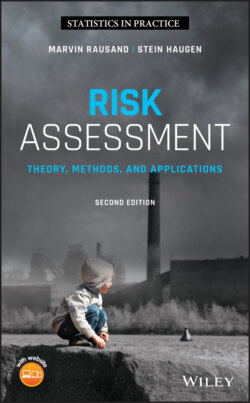Читать книгу Risk Assessment - Marvin Rausand - Страница 241
5.2.1 Acceptable and Tolerable Risk
ОглавлениеEarlier in this chapter, it is stated that risk acceptance is about balancing the ideal solution with no risk against the resources we have available to reduce risk. In practice, this balance is strongly influenced by the benefits we hope to receive from accepting risk. We are often willing to accept a very high risk voluntarily if the benefit we receive is very high. An industrial worker may, for example, accept the risk from the plant that employs her because the activity provides her income. Her neighbor, on the other hand, may find that the individual risk that she is exposed to from the same plant is totally unacceptable, as she receives no direct benefit from its operations. To make things even more complicated society may decide that the benefits to the local community (employment, taxes) are so large that the risk can be accepted. Who, then is the legitimate decision‐maker? A manager accepting a risk that she herself will not be exposed to may have very little trouble doing so. The worker or neighbors who face the risk with their own lives may be of another opinion.
To capture the complexity of acceptable risk problems, HSE (2001) distinguishes between tolerable and acceptable risk:
…“tolerable” does not mean “acceptable”. It refers instead to a willingness by society as a whole to live with a risk so as to secure certain benefits in the confidence that the risk is one that is worth taking and that it is being properly controlled. This does not imply that the risk is acceptable to everyone, meaning that everyone would agree without reservation to take the risk or have it imposed on them.
Based on this distinction, the UK legislation operates with three categories of risk: unacceptable, tolerable, and broadly acceptable (HSE 2001):
Activities with an unacceptable level of risk are regarded as unacceptable except in extraordinary circumstances (such as wartime), whatever their benefits. Activities causing such risk would be prohibited, or would have to reduce the risk whatever the cost.
Activities with a tolerable level of risk are tolerated to secure certain benefits. For these activities, the risk is kept as low as reasonably practicable (ALARP), by adopting risk reduction measures unless their burden (in terms of cost, effort, or time) is grossly disproportionate to the reduction of risk they offer.
A broadly acceptable level of risk implies that the risk level is generally regarded as insignificant. Further actions to reduce the risk are not normally required.
The Royal Society (1992) describes a similar conceptual framework for risk to members of the public. Above a certain level, which is proposed to be 1 in 10 000 per year, the risk should be considered intolerable and call for immediate action to reduce the risk irrespective of the cost – even when the person exposed judges that she has some commensurable benefit. A risk of 1 in 1 000 000 is suggested as being broadly acceptable to the public. Between these two levels, the risk is considered tolerable but not negligible, and there is a need to reduce it further “as low as is reasonably practicable.” Below the broadly acceptable level, the risk is considered to be negligible and an employer should not be required to seek further improvement.
The environmental thesaurus of GEMET 1 defines “acceptable risk level” as follows:
